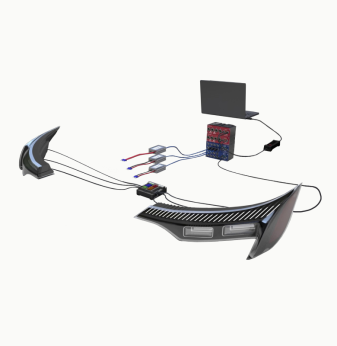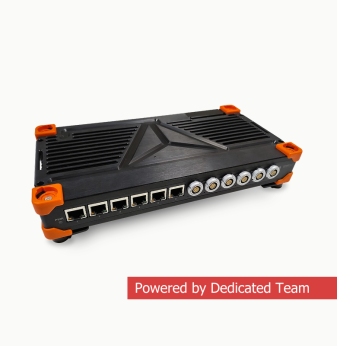Integrating Secure Elements and Hardware Roots of Trust in Embedded Device Design

Introduction: Why Embedded Security Starts in Hardware
With the proliferation of connected devices across critical sectors like automotive, medical, and industrial automation, hardware-level security is no longer optional. It’s a foundational requirement. Attackers increasingly target firmware, supply chain vulnerabilities, and identity spoofing — and software-only defenses aren’t enough.
To build truly secure embedded devices, engineers must integrate secure elements (SEs) and hardware roots of trust (RoT) — tamper-resistant components that enable cryptographic identity, secure boot, and encrypted communication.
In this article, we’ll explore how secure elements and roots of trust work, how to select and integrate them, and best practices for real-world implementation in embedded design.
What Is a Secure Element (SE)?
A secure element is a tamper-resistant IC designed to:
- Store cryptographic keys securely
- Perform cryptographic operations (signing, encryption)
- Authenticate device identity (X.509 certificates, unique IDs)
- Enforce secure boot and firmware integrity
Secure elements are used in:
- Payment terminals and cards
- Automotive ECUs
- IoT gateways and sensors
- Smart meters
Long-tail keyword example: "What is a secure element and how is it used in embedded devices?"
Answer: A secure element is a hardened chip that protects cryptographic keys and ensures device identity and data integrity. In embedded devices, it’s used for secure boot, TLS authentication, and protection against firmware tampering or cloning.
What Is a Hardware Root of Trust (RoT)?
A root of trust is the immutable foundation of system security. It is responsible for:
- Securely starting the boot chain
- Validating firmware signatures
- Measuring system integrity (e.g., via TPM)
RoT implementations include:
- ROM-based bootloaders
- Secure fuses or key slots
- TPMs (Trusted Platform Modules)
- Hardware security modules (HSMs)
Secure Element vs. TPM vs. RoT
| Feature | Secure Element | TPM | Hardware RoT |
| Purpose | Cryptographic offload | Full system attestation | Root-level verification |
| Interface | I2C, SPI, ISO7816 | LPC, SPI, I2C | SoC internal / bootloader |
| Examples | ATECC608, STSAFE-A110 | TPM 2.0 (Infineon, Nuvoton) | NXP High Assurance Boot |
| Use Cases | IoT, automotive keys | Industrial, PC security | Secure boot, code auth |
Common Secure Element Features
- ECDSA key generation and signing
- HMAC and SHA accelerators
- Monotonic counters and fuses
- Secure storage with access control
- TLS session authentication (mutual auth)
Popular devices:
- Microchip ATECC608A (IoT TLS offload)
- ST STSAFE-A110 (device identity)
- Infineon OPTIGA Trust M (IoT provisioning)
Integration Tips for Embedded Engineers
1. Interface Selection
- Choose I2C or SPI based on MCU availability
- Keep bus short and shielded to avoid injection attacks
2. Key Provisioning
- Use pre-provisioned secure elements for scalable production
- For in-house provisioning, use secure toolchains and lock keys post-burn
3. Firmware Integration
- Use vendor SDKs for TLS stack integration (mbedTLS, wolfSSL)
- Offload cryptographic operations where possible
- Use X.509 device certificates for mutual authentication
4. Secure Boot Architecture
- Start with ROM bootloader verifying second stage via RoT key
- Use SE or internal crypto engine to validate firmware hash
- Log measurements to TPM if available
Long-tail keyword example: "How to implement secure boot with a secure element in an embedded system?"
Answer: The secure boot process begins in ROM or hardware, which uses a root key (stored in secure element or fuses) to verify the digital signature of the next firmware stage. Only verified firmware is allowed to run, protecting against tampering or rollback.

Secure Communication and TLS Offload
Secure elements can offload TLS handshakes:
- Perform ECDSA client authentication
- Store certificates securely
- Accelerate AES and ECC calculations
Useful in:
- LoRaWAN and NB-IoT devices
- MQTT or HTTPS-based cloud communication
- Field-deployed gateways needing identity verification
Challenges and Pitfalls
- Supply chain risk: ensure secure element authenticity
- Key management at scale: consider PKI, HSM-backed provisioning
- Debugging difficulty: SEs often require trust zone separation and emulation tools
- Boot deadlocks: careful reset/clock sequencing required when SE is essential for boot
Best Practices for Real-World Deployment
- Use dual-signature verification (bootloader + app)
- Isolate secure element on its own power domain and reset line
- Validate cryptographic operations on device during production test
- Rotate certificates and keys periodically
- Perform third-party audits for security certification (e.g., Common Criteria, FIPS)
Summary: Hardware Security Starts with Trust Anchors
In a world of increasingly sophisticated threats, embedded security must start with silicon. Secure elements and roots of trust provide the cryptographic foundation needed to secure identity, software integrity, and communications in connected devices. When integrated early in the design process, they prevent costly redesigns and security breaches post-deployment.
Why Promwad?
Promwad designs secure embedded systems from the ground up. We help clients:
- Select and integrate secure elements and TPMs
- Implement secure boot with RoT and firmware signing
- Design secure key provisioning and authentication schemes
- Build devices for automotive, industrial, and IoT certification
Let’s build trust — into your product and the supply chain.
Contact us to secure your next embedded innovation.
Our Case Studies












